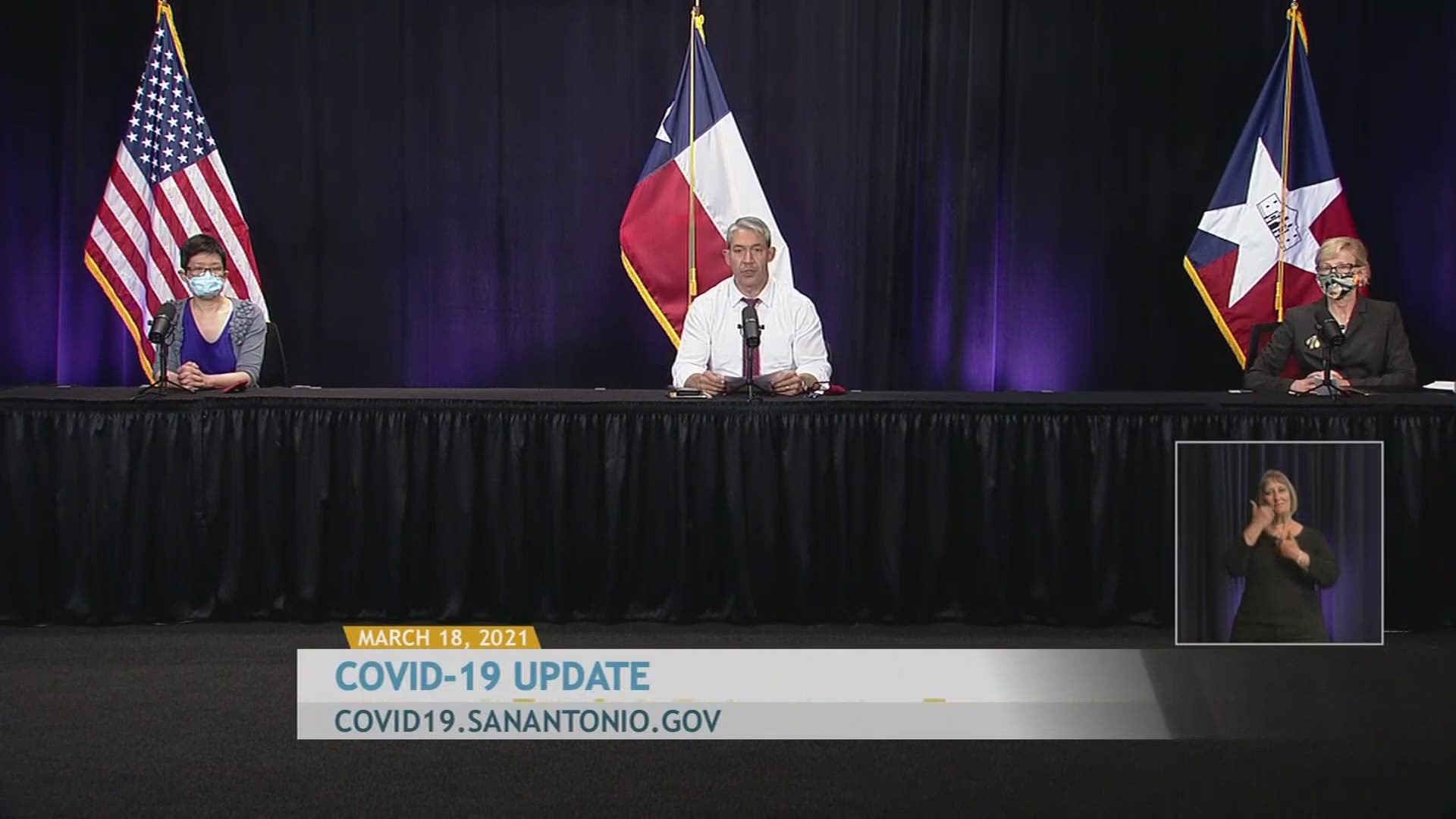SAN ANTONIO — We're tracking the latest numbers from the coronavirus pandemic in San Antonio and across Texas. Here are the latest numbers reported by Bexar and surrounding counties:
- Bexar County: On Thursday, 77 new cases were reported, bringing the total number of cases to 201,273. No new deaths were also reported; the local death toll from virus complications remained at 2,995.
- Hays County: On Thursday, officials reported 67 new cases in the county and one additional COVID-related fatality. There is now a total of 16,856 lab-confirmed local cases, while the death toll rose to 234. Officials estimate 16,199 residents have recovered, while 423 are still ill with the virus.
- Comal County: Officials reported 5 new cases on Thursday, along with no additional virus-related deaths. As of Thursday, 9,495 total COVID-19 cases have been reported, including 5,000 confirmed and 4,474 probable cases, while 303 county residents have died due to COVID-19 complications.
More county case information is available through the Texas Department of Health Services COVID-19 dashboard.
How Bexar County is trending
We've tracked how many coronavirus cases have been confirmed in Bexar County from the time officials began reporting cases in March 2020. The graphic below shows the number of cases since June and charts those daily case numbers along a 7-day moving average to provide a more accurate picture of the overall coronavirus case curve in our area and the direction we're trending amid the pandemic.
On Thursday, San Antonio Mayor Ron Nirenberg reported 77 new coronavirus cases in Bexar County, bringing the total number of local cases to 201,273. Nirenberg noted a delay in reporting from Curative Labs reflected in Thursday's low count, which he hoped would be corrected in the next few days. The seven-day rolling case average dropped to 146.
No additional virus-related deaths were reported in the community; in all, 2,995 Bexar County residents have died from virus complications.

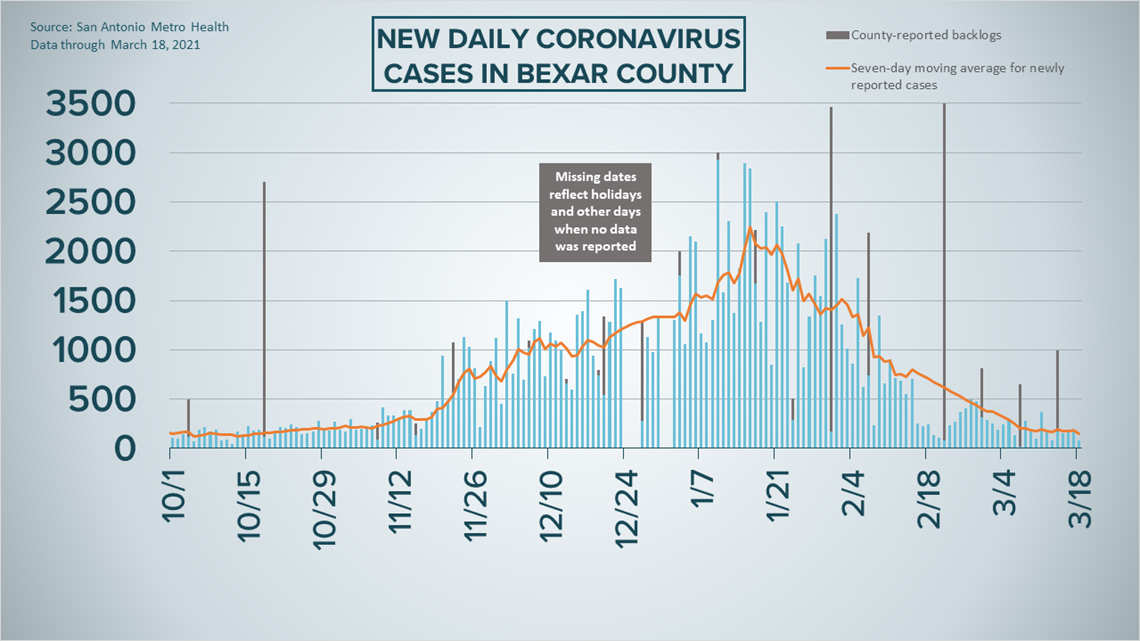
Local hospitalizations dropped to 202 COVID-19 patients receiving treatment at area facilities, which six fewer than Wednesday. Of the 202 currently-hospitalized patients, 41 patients are on ventilators and 79 are in intensive care.


According to the Texas Department of State Health Services, more than 23% of Bexar County residents 16 or older have received at least one vaccine dose. More than 13% are fully vaccinated.

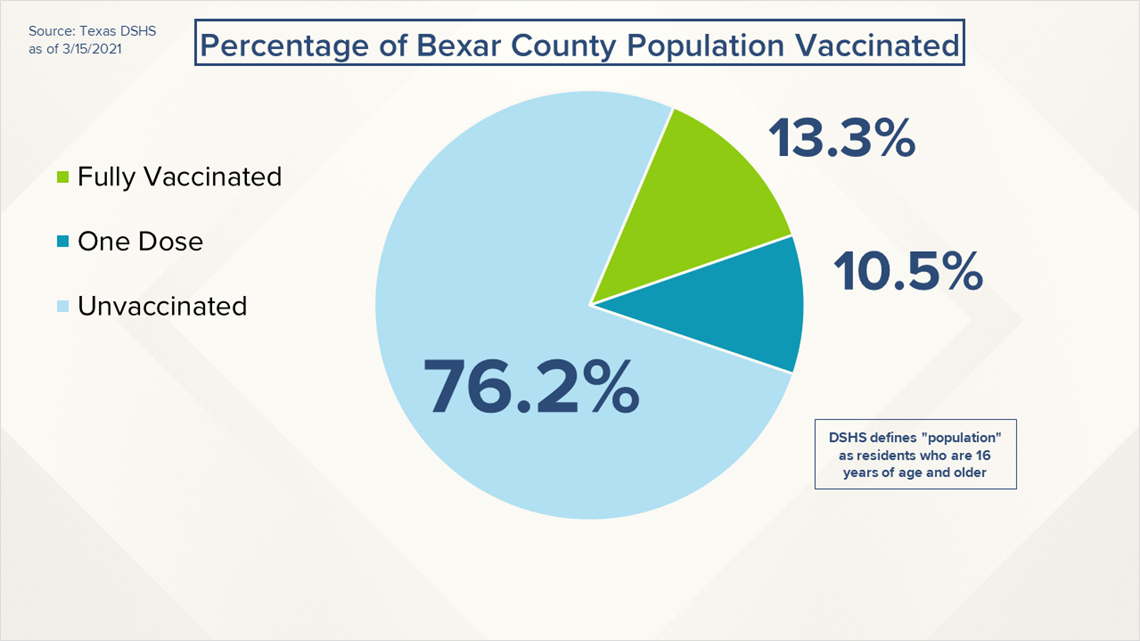
In this week's update of Bexar County's progress and warning indicators, health officials noted that the positive rate had jumped to 5.6% over the previous week, a change of three percentage points. Nirenberg attributed the rise to a decrease in testing over the last week, possibly caused by Spring Break.
The case rate per 100,000, meanwhile, dropped to 9.1. Bexar County remains in the low-risk level, as tracked by Metro Health.
Coronavirus in Texas
The total number of novel coronavirus cases in the state since the pandemic began grew by 4,541 on Thursday, according to the Texas Department of State Health Services. That total includes 3,757 new confirmed cases, 616 new probable cases, and a backlog of 168 cases. More details can be found on this page.
Thursday's figures bring the total number of Texans diagnosed with COVID-19 to more than 2.735 million.

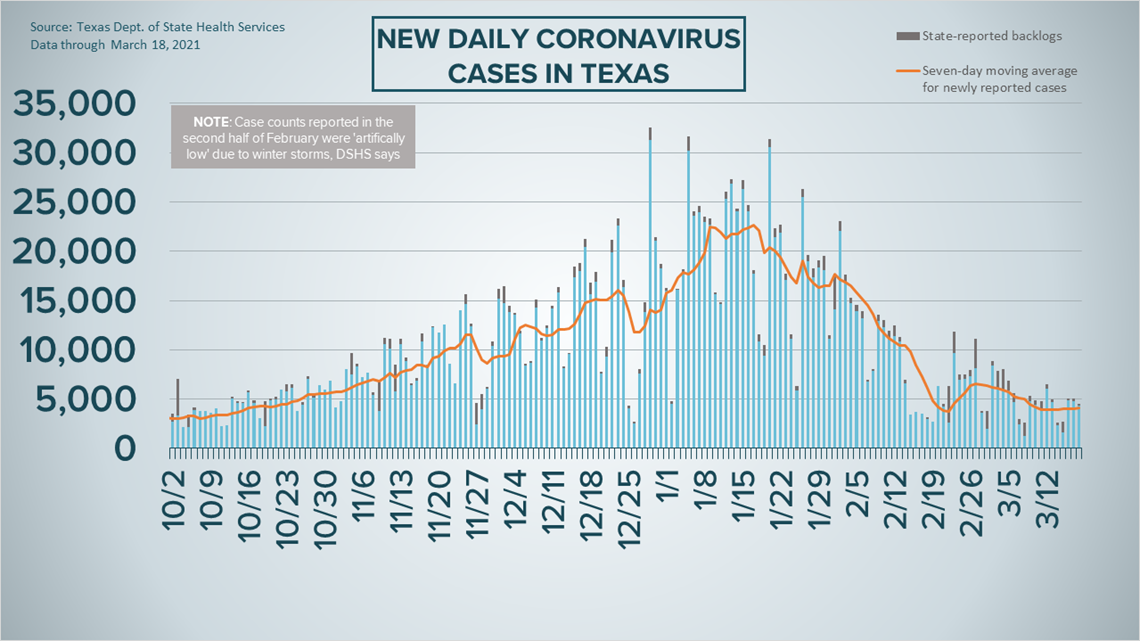
Meanwhile, state health authorities reported an additional 198 deaths from coronavirus complications in Texas. In all, 46,077 Texans have died from COVID-19 complications.
The number of concurrent hospitalizations across the state has decreased for the ninth day in a row, this time by 153 to 3,846 COVID-19 patients receiving treatment for their symptoms across the state, as of Thursday. The last time the figure was this low was October 11.
The state, meanwhile, estimates that about 2.578 million Texans have recovered, while 108,696 Texans remain ill with COVID-19.
The latest update from the Texas Education Agency showed that there have been at least 193,496 cumulative cases among staff and students on Texas public school campuses through March 7. That number comprises 126,154 positive student cases and 67,342 staff cases. More information can be found here.

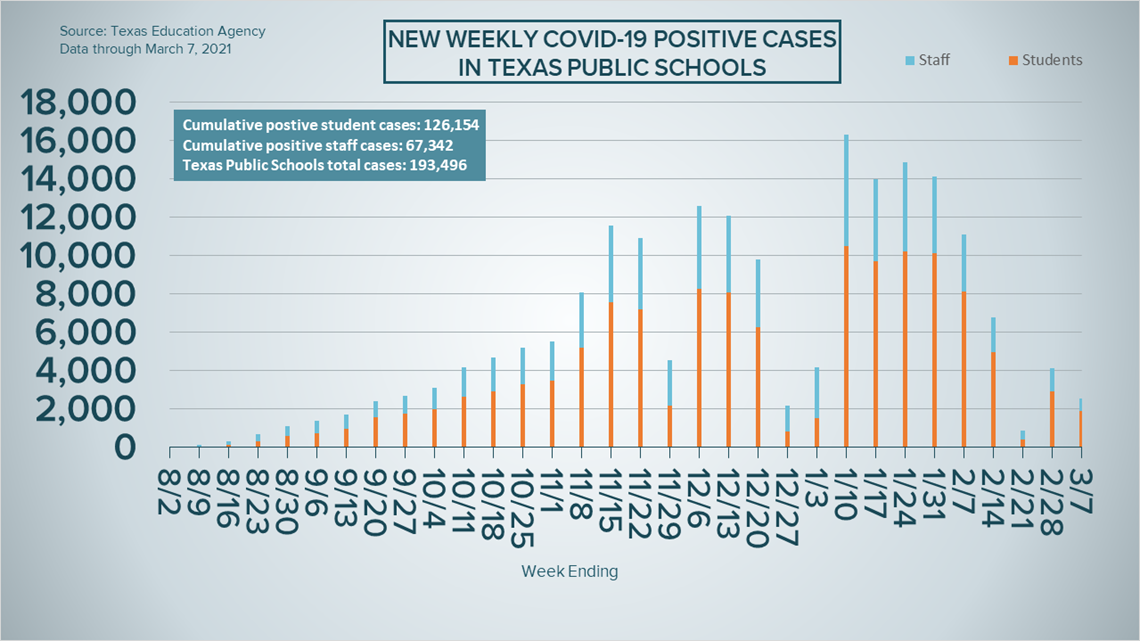
The TEA typically releases new data on school cases on Fridays.
Latest Coronavirus Headlines
- VERIFY: AstraZeneca still recommended and being tested as blood clot reports are investigated
- President Biden says US to hit goal of 100 million COVID shots on Friday
- 3 feet or 6 feet: CDC weighs changing schools COVID guidance
- WHO expert: Coronavirus origin study to have unanimity despite pressure
- VERIFY: You're clear to donate blood after getting COVID-19 vaccine
- 30,000 Ford employees told they can work from home permanently
Coronavirus symptoms
The symptoms of coronavirus can be similar to the flu or a bad cold. Symptoms include fever or chills, cough, shortness of breath or difficulty breathing, fatigue, muscle or body aches, headache, new loss of taste or smell sore throat, congestion or runny nose, nausea or vomiting, and diarrhea, according to the Centers for Disease Control.
Most healthy people will have mild symptoms. A study of more than 72,000 patients by the Centers for Disease Control in China showed 80 percent of the cases there were mild.
But infections can cause pneumonia, severe acute respiratory syndrome, kidney failure, and even death, according to the World Health Organization. Older people with underlying health conditions are most at risk.
Experts determined there was consistent evidence these conditions increase a person's risk, regardless of age:
- Chronic kidney disease
- COPD (chronic obstructive pulmonary disease)
- Obesity (BMI of 30 or higher)
- Immunocompromised state (weakened immune system) from solid organ transplant
- Serious heart conditions, such as heart failure, coronary artery disease, or cardiomyopathies
- Sickle cell disease
- Type 2 diabetes
- The CDC believes symptoms may appear anywhere from two to 14 days after being exposed.
Human coronaviruses are usually spread...
- Between people who are in close contact with one another (within about 6 feet).
- Through respiratory droplets produced when an infected person coughs, sneezes or talks. These droplets can land in the mouths or noses of people who are nearby or possibly be inhaled into the lungs.
- Some recent studies have suggested that COVID-19 may be spread by people who are not showing symptoms.
Help stop the spread of coronavirus
- Stay home when you are sick.
- Eat and sleep separately from your family members
- Use different utensils and dishes
- Cover your cough or sneeze with your arm, not your hand.
- If you use a tissue, throw it in the trash.
Find a Testing Location
City officials recommend getting a COVID-19 test if you experience fever or chills, cough, shortness of breath or difficulty breathing, fatigue, muscle or body aches, headache, new loss of taste or smell, sore throat, congestion or runny nose, nausea or vomiting, or diarrhea.
Here's a Testing Sites Locator to help you find the testing location closest to you in San Antonio.

